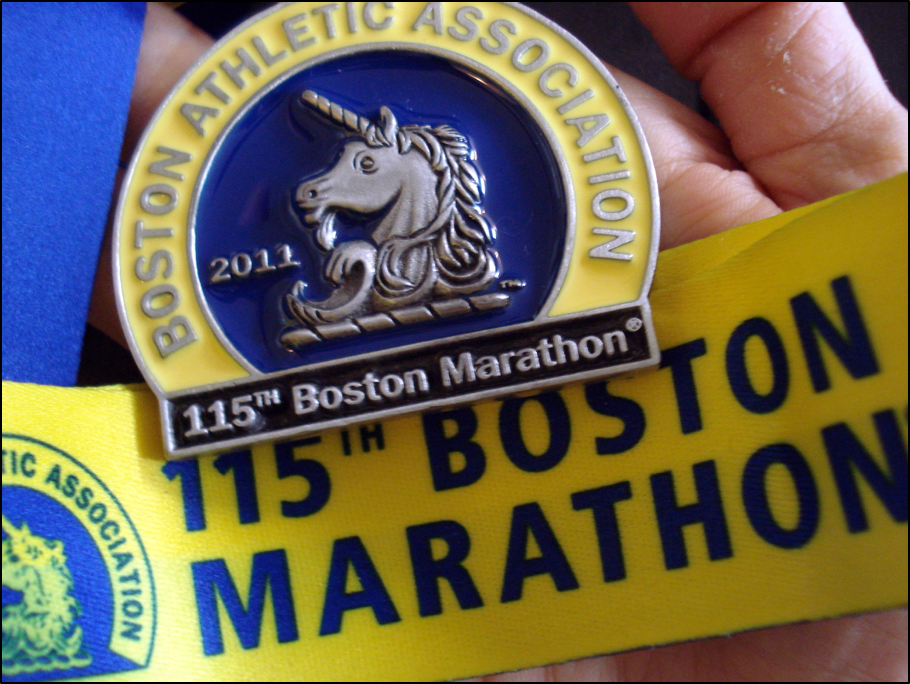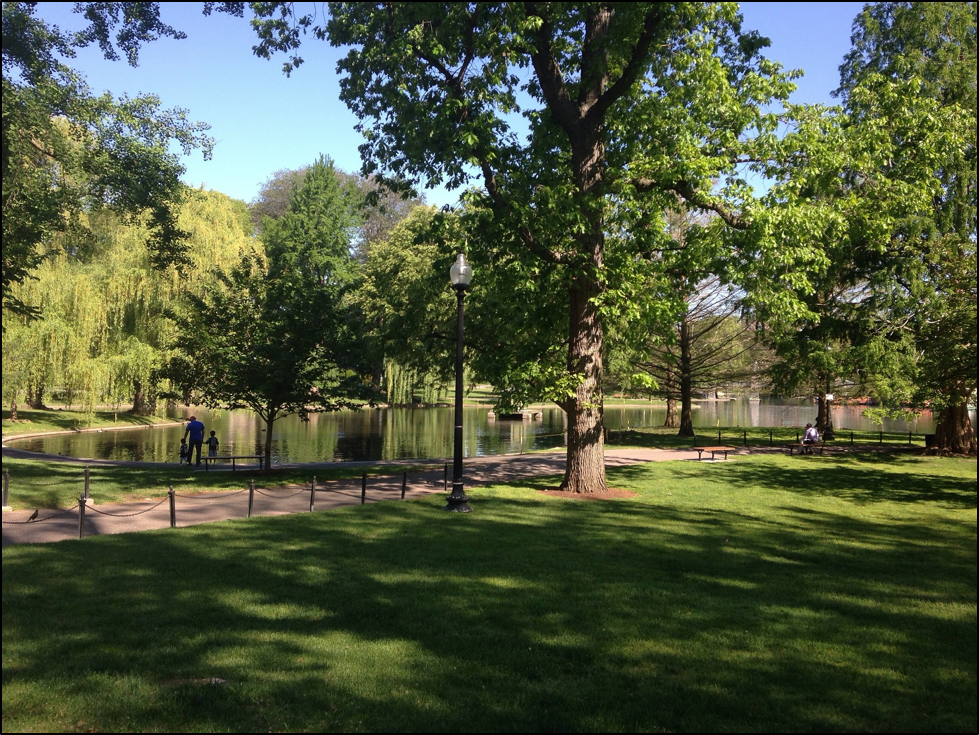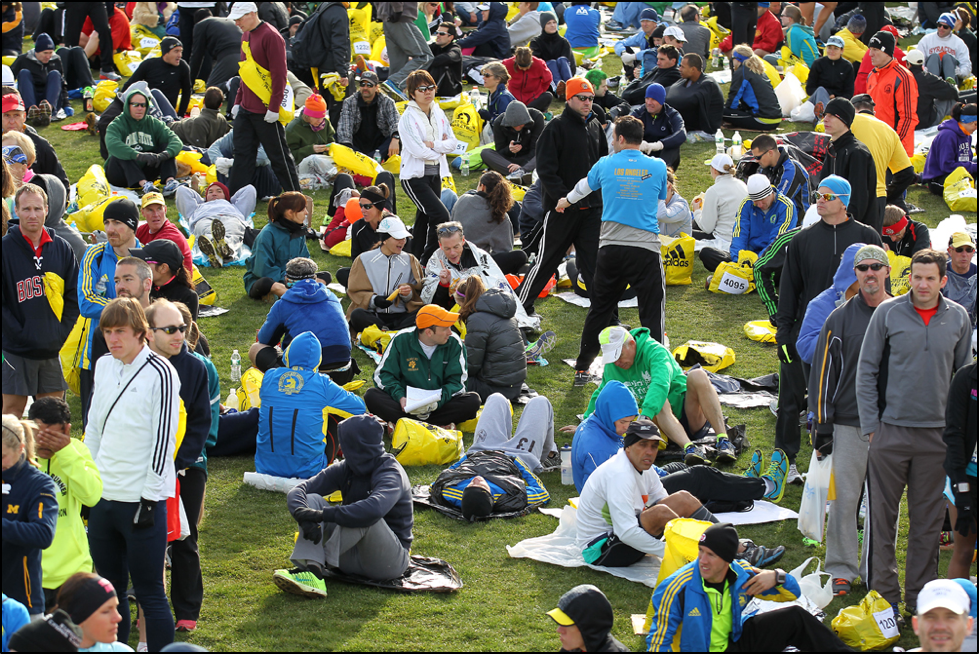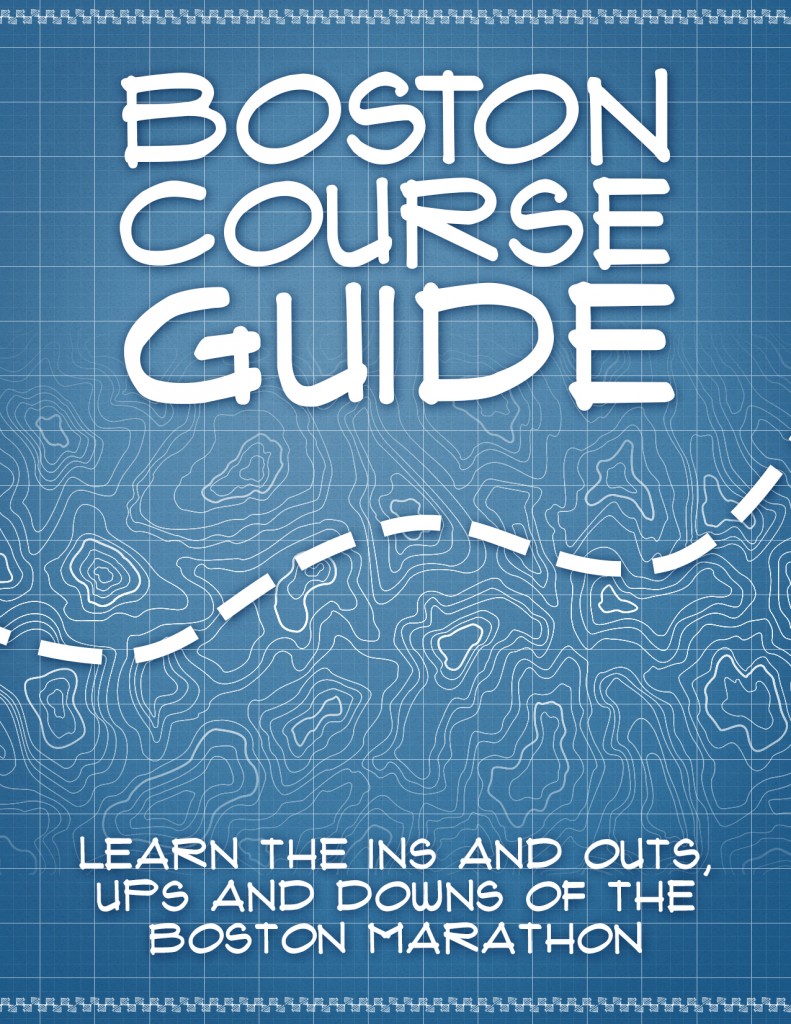The Boston Marathon has captured the imagination of runners for over a hundred years. And for good reason: it’s considered the “world’s most prestigious marathon.”

First run in 1897 with a mere 18 athletes, the 2017 race had over 30,000 runners start the race on Marathon Monday.
The history of Boston is significant: it was the first marathon to have an official female finisher in 1967! Entered by the name of “K.V. Switzer” to avoid detection (women weren’t allowed to run marathons back then), Kathrine Switzer sparked a women’s running revolution that culminated in officials finally recognizing female competitors in 1972.
Hundreds of thousands of marathoners dream of being part of this rich history: racing through the quiet suburbs of greater Boston before catching sight of the Prudential tower on the skyline.
The giant CITGO sign, electrifying crowds lining the streets near Boston College, the famous “scream tunnel” near Wellesley College, and the challenge of Heartbreak Hill make Boston one of the most exciting races in the world.
It’s no wonder the Associated Press aptly called Boston “the world’s most prestigious marathon course.”
Indeed, it’s a unique course. It features a relatively narrow start for the size of the race, a significant elevation loss from the start in Hopkinton to the finish on Boylston street of 146 meters, and a series of grueling hills in Newton that come at a poor time for runners.
Mastering the Boston Marathon course can be a significant challenge.
Despite those obstacles, it’s still very possible to run a fast time at Boston. In fact, the then-fastest marathon time ever recorded was run at the 2011 race. Taking advantage of a strong tailwind, winner Geoffrey Mutai ran 2:03:02, running an average mile pace of 4:41.
Alas, since Boston is a point-to-point course with a net downhill, his incredible finishing time was not eligible for a World Record.
Today, you’re getting an excerpt from our Boston Marathon Course Guide explaining how to navigate the morning of the race and the Athlete’s Village in Hopkinton.
The Morning of the Boston Marathon

The Boston Common
Since the events at the 2013 Boston Marathon, race organizers have increased their security measures. The most problematic measure for runners is that there is no longer any kind of bag drop near the start in Hopkinton.
In fact, no bags at all are allowed on the buses, at the starting line, or at the finish, other than small knapsacks you may wear while running.
There is a bag drop at Boston Common before you get on the shuttle to Hopkinton. For that you have to use the clear plastic bag that will be in your race packet that you pick up at the Expo; they won’t accept any other bags. Be sure to get to the shuttle bus area early enough to drop it off, and go to the correct location, which is tied to your start wave.
Depending on where you are staying the night before the race, you will likely be taking the shuttle to the starting line in Hopkinton. Leaving from the Boston Common area in the heart of the city, the shuttle is definitely the easiest and most efficient way of getting to the starting line on time and without incident. It is recommended that you arrive for the shuttle on the early end of the time window provided by the BAA for your starting wave.
You have two choices for everything that you get on the shuttle bus with in Boston:
- carry it with or on you while running the marathon
- discard it in Hopkinton before starting
The morning hours in Hopkinton at the Athlete’s Village can be cold and wet, so most years you’ll want to wear a warm layer of clothing and maybe a hat and gloves. I usually visit a Salvation Army store or some other kind of recycled clothes store the week before and buy a cheap set of sweats that I can leave at the start.
The look I achieve is less than fashionable, but at least I’m warm and don’t have to worry about throwing out an expensive set of clothes. (The Boys and Girls Club have stations throughout the Village to gather up and recycle them, so at least they aren’t going to waste.)
A few important things to consider in preparing to take the shuttle to the starting line:
- It is typically pretty cold that early in the morning and you will be standing outside for an extended period of time, so dress warmly!
- The shuttle ride takes at least 30 minutes from Boston to Hopkinton. Since it is Boston, traffic can be a factor that causes the shuttle ride to last even longer. In the last few years, there have been instances where some of the buses spent enough time in traffic to double the normal time it would take to get the Athlete’s Village.
While there are portable bathrooms available when you show up to get on the shuttle as well as once you arrive at the Athlete’s Village, there are NO bathrooms on the buses, so make sure to plan that into your pre-race morning hydration and bathroom needs.
The Athlete’s Village

The Boston Marathon’s Athlete Village
Upon arriving at the Athlete’s Village you will be met with loud music, large crowds, giant tents, portable bathrooms, light food, water, and sports drinks.
It’s like a big party, except it’s early in the morning and there’s no booze.
Finding a good place to sit and relax can be a bit of a challenge. Typically there aren’t any chairs or tables available, so most people sit on the ground. Bringing something to sit on, provided it can fit in your gear bag or you are willing to throw it out, is probably a good idea. It will protect you from the cold (and potentially wet) ground.
There will be two or three immense tents in case of rainy weather, so you’ll be able to find shelter from rain and sun. But if it’s been rainy in the days leading up to the race, the ground under them is likely to be soaked. Be prepared, since you probably won’t want to be on your feet the hour or two you’ll spend at the Village!
The best thing you can do in the village is relax, get ready to race, and stay warm (another reminder to bring warm clothes!). There are a huge number of porta-potties, but the lines can be enormous. Plan ahead to do your business so you’re not late to the start!
As the start time for your wave approaches, you’ll start your walk to the starting line, prompted by the announcer. The walk there is longer than you might think, almost three-quarters of a mile.
On the journey to the starting line, it is probably a good idea to do any warm-up activities you have planned prior to the race (e.g., light running, dynamic stretching, skipping, etc.), since it will be difficult to do much of anything once you’ve entered your starting corral.
This is your last time to use the bathroom before the race. There are many portable bathrooms on the walk to the starting line, and many of them are less crowded than the ones in the village. Even if you feel like you don’t have to use the porta-potty, try anyway!
Trust me on this – I made this mistake years ago and it wasn’t pretty. There are a number of porta-potties along the race course—at every aid station, Red Cross station, and a few other locations—but it’s likely you’ll have to wait to use one.
Pro tip: There are a large number of porta-potties—hundreds!—immediately before the starting corrals, on the left side of the road in downtown Hopkinton. These are usually not heavily used, and provide a last minute option. Just make sure you start your walk to the starting line a few minutes early.
The area around the starting line will be chaotic, so prepare yourself. There will be people everywhere. Getting settled in your corral is going to be a challenge.
You’ll want to get in there and find the right starting place, but you’ll also want to be able to move around a bit and stay loose (and also warm).
At this point all you can do is mentally prepare for the 26.2 miles of running that await.
The Boston Course Guide
This post is just an excerpt of the complete Boston Course Guide.
If you’re running the Boston Marathon this year, get the full version. It includes:
- How to use the Boston Course Guide to best inform your race strategy
- How to navigate the marathon expo when you pick up your bib number
- The course itself with specific guidance on the start, middle miles, and final 10k
- How to make the most of the finish area once you cross the finish line on Boylston
If you have spent months (or years) preparing for the Boston Marathon, give yourself every advantage and leave nothing to chance.
Check out the entire Boston Course Guide to finalize your preparation for the world’s most prestigious marathon!